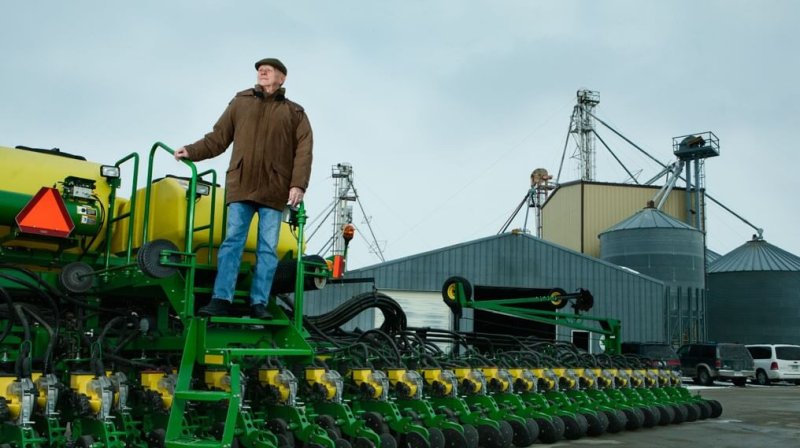Mention agricultural biotechnology and giant corporations Monsanto, Dupont or Syngenta typically come to mind. Few outside of the biotech industry know Stine Seed Farm, a plant breeding and biotechnology group founded by Harry Stine worth $3 billion, based in Adel, Iowa.
How did Stine make his billions? His company develops germplasm, the genetic material in seeds that produces new plants. The company has more than 900 patents. According to Forbes, its soybean germplasm is the basis for 60 percent of all soybean acreage planted today in the United States:
Stine Seed does business with all of the heavyweights and has for more than three decades, primarily because it has something everybody else needs: the best-performing soybean seeds in the business. Through plant breeding, a roughly 10,000-year-old technique that’s not unlike creating Thoroughbred horses or show dogs, Stine has been perfecting the genetic makeup of soybean seeds–primarily used in animal feed and to produce vegetable oils–since the 1960s.
To make a successful biotech plant, having the right traits isn’t enough. The breeding program must focus on yield; the company claims to offer the highest-yielding germplasm on the market.
“Our germplasm–our genetic base here–is the best in the world,” says Stine, who according to Forbes is the richest man in Iowa. “We dominate genetics in the industry.”
The company licenses its high-yielding germplasm to biotech giants like Monsanto and Syngenta, collecting more than $1 billion in annual revenue. Then, they improve the germplasm by inserting desirable traits like herbicide resistance, Monsanto’s Roundup Ready trait.
For farmers, the “Roundup Ready” soybean seed would be an industry-changing innovation that reduced time and labor battling weeds. But a fancy biotech trait offered limited value if the genetic base of the seed was inferior and overall yields suffered. Roundup Ready technology combined with Stine’s industry-leading soybean genetics was a natural fit.
“His was the first company in the industry with soybeans to structure licensing agreements so that when companies took a contract with him they could not breed,” says Philippe Dumont, a lawyer and seed industry veteran who has spent the past decade working for Bayer. “It shows a superior foresight.” The availability of such intellectual property protection has driven investment in biotechnology for the past few decades, spurring innovation and growth.
The company also develops and tests its own plant traits. In 2007, Stine Biotechnology, the research and development division, patented the aerosol beam injector, a new gene transfer method that emits genetic material up to 100 times smaller than the metal particles carried via a gene gun. While the gene gun is a popular method of transferring DNA, it is generally ineffective at delivering other types of genetic material like RNA. Stine Seed’s aerosol beam injector is able to insert not just DNA, but also RNA, proteins, and other material, opening the door to many other exciting possibilities.
Additional Resources:
- “A lean, mean gene industry,” Institute for Agriculture and Trade Policy
- Stine Seed
- “Genetic engineering vs breeding,” Genetic Literacy Project































